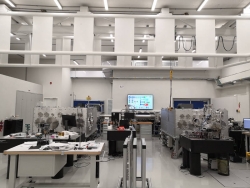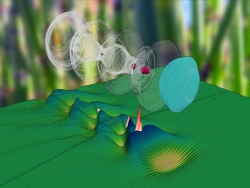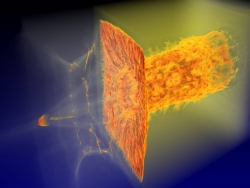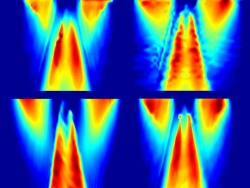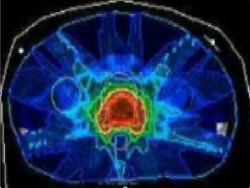News
Recent Publications:
Seemann O. Wan Y., Tata S., et al. Laser Proton Acceleration from a Near-Critical Imploding Gas Target. PRL 133:(2) (2024)
Smartsev S., Liberman A., Andriyash I.A., et al. Simple few-shot method for spectrally resolving the wavefront of an ultrashort laser pulse. Opt. Let. 49:(8)1900-1903 (2024)
Wan Y., Tata S., Seemann O., et al. Real-time visualization of the laser-plasma wakefield dynamics. Sci. adv. 10:(5) (2024)
Liberman A., Lahaye R., Smartsev S., et al. Use of spatiotemporal couplings and an axiparabola to control the velocity of peak intensity. Opt. Let. 49:(4)814-817 (2024)
Recent Conferences and Collaborations:
Members of Malkalab are traveling to LULI in France to participate in high-power laser based astrophysics experiment.
Members of Malkalab are traveling to ELI-NP in Romania to perform experiments using the most powerful laser in the world.
Members of Malkalab traveled to Dresden, Germany for the 2024 WHELMI conference colleagues from HZDR, ELI-NP, and LMU.
Members of the Malkalab team traveled for an experiment at Lund University in Sweden, together with colleagues from ELI-NP.
Members of Malkalab traveled to the LOA in France for experiments in laser-plasma acceleration.
Other news:
Malkalab went on a lab volunteer trip to rebuild the devastated community of Kfar Azza. Check out the pictures in the gallery.
Our cover art proposal won 1st place for the optics and photonics news optics in 2024 issue. It features an artists rendering of IMPALA - our new spatio-spectral measurement that was listed as one of the 30 "breakthroughs in optics" in 2024. Check out the cover art below.
Malkalab congratulates Heychal on the successful completion of her Msc. degree!
Our newly developed spatio-spectral pulse characterization technique, (IMPALA - Iterative Multispectal Phase Analysis for LAsers), was selected as one of the "30 breakthroughs in optics in 2024" by Optics and Photonics News! Jointly developed with the Laboratoire d’Optique Appliquée (LOA) in France, IMPALA uses a simple pinhole mask together with a novel algorithm to give users critical information about high-power, short pulse lasers. Check out the story in our "in the media" section.
We are currently installing our new laser, Oona, which will be dedicated to the ebeam4therapy project, developing next generation cancer therapy based on laser-plasma acceleration!



